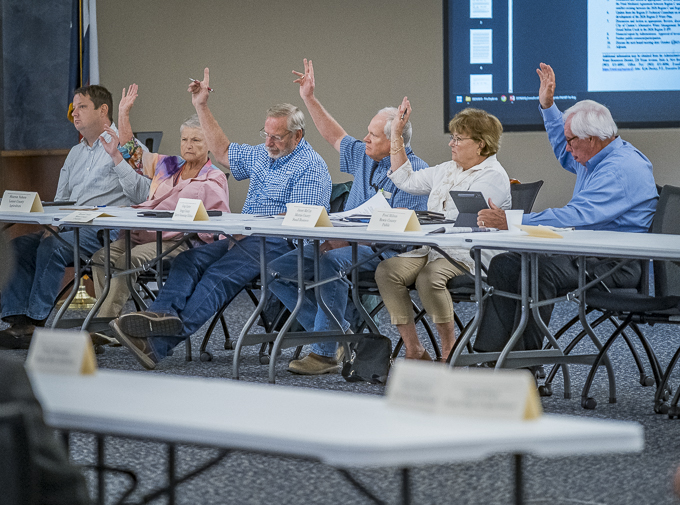Controversial Northeast Texas reservoir project still on table, but Dallas-Fort Worth will look at another possible water source
Published 5:40 am Thursday, August 14, 2025
PITTSBURG — Opponents of the proposed $7 billion Marvin Nichols Reservoir in Northeast Texas have scored some victories in their battle against the long-discussed project, though it isn’t off the table.
Members of the Region D Water Planning Group serving Northeast Texas approved a mediated agreement with leaders of the Region C Water Planning Group serving Dallas during a meeting Wednesday in Pittsburg, the latest chapter in the decades-long fight by people in this region against the proposed 66,000-acre reservoir.
The agreement requires Region C leaders, who serve the Dallas-Fort Worth area, to consider piping water from the Toledo Bend Reservoir to Dallas, but also allows them to continue considering building Marvin Nichols in Titus, Franklin and Red River counties as a future water supply for North Texas.
A study will assess the impact of the proposed reservoir on Northeast Texas’ economy, agricultural and natural resources. In addition, water planning leaders will work together to seek state funding to make piping water from Toledo Bend a more viable option for supplying the Dallas-Fort Worth area’s water needs than building Marvin Nichols.
Construction of Marvin Nichols would flood 66,000 acres of land in Northeast Texas, and 130,000 acres or more of additional land could be requisitioned to replace submerged wildlife habitats.
The project has been proposed for decades, and Northeast Texans strongly oppose it. Hundreds of people attended Wednesday’s meeting between the Region C and Region D water planning groups at a Camp County conference center to voice their disdain for the project, which they say will harm the ecosystem and disrupt their lives.
Those supporting the project say the reservoir is the only viable option for quenching the thirst of an ever-growing economic powerhouse and the only way to capture water that otherwise would leave the state.
The agreement between the Region C and D water planning groups was the result of mediation ordered by the Texas Water Development Board this year.
The Dallas-Fort Worth area’s population is projected to double by 2070, and the area is set to face a water shortage of roughly 1.3 million acre-feet of water by then, according to the state’s 2021 water resource plan. The shortage of water could stifle economic and population growth and cause the loss of roughly $48 billion in income yearly.
One configuration of the Marvin Nichols Reservoir would retain more than 1.5 million-acre feet of water, according to documents presented previously. The reservoir would prevent roughly 400,000 acre-feet of water — enough for 4 million Texans — from leaving Texas and traveling to Arkansas during a drought year.
One of Northeast Texas residents’ main concerns is how much land the reservoir will consume. Opponents say the loss of farmland and forest would harm the agricultural and timber industries, which are major economic drivers in the area.
The destruction of Northeast Texas families’ ancestral homes also has been the subject of many opponents’ laments, and the loss of land also could harm the counties that no longer will be able to collect property taxes from the submerged land.
Northeast Texans have questioned whether Dallas-Fort Worth-area residents are doing enough to supply their own water needs. They argue that the region could get the water it needs from existing sources, reduce water loss from leaky infrastructure and increase conservation.
Water usage is higher in Dallas, where the Texas Water Development Board has set a target for the city’s per-capita water usage to be reduced to 166 gallons per-day by 2070 — a 7% drop during the next 50 years. To put the 166 gallon target in perspective, a Dallas household in 2070 would still be consuming nearly twice as much water as an average Denver household does in 2024.
